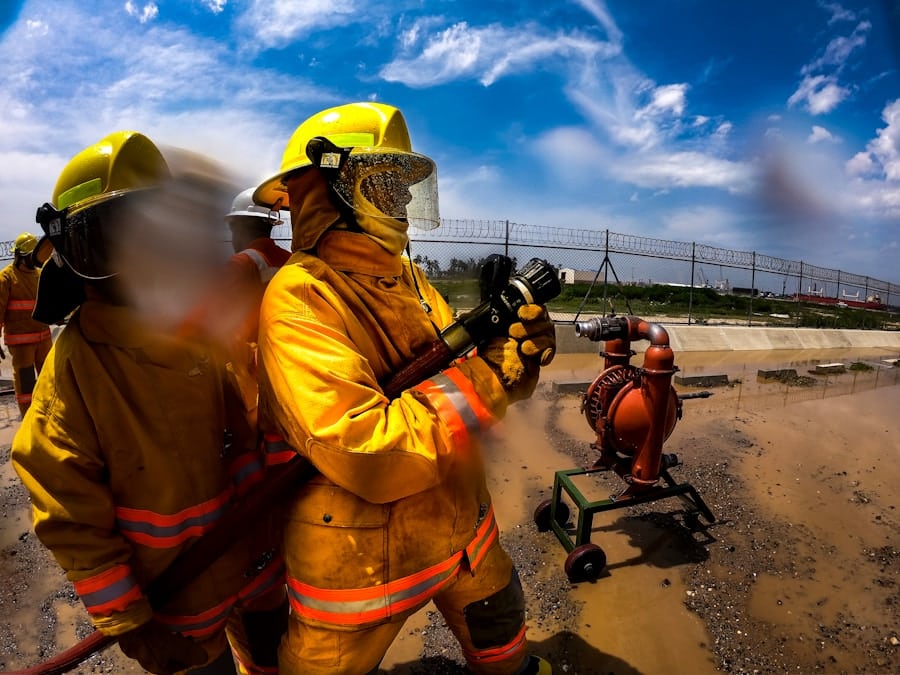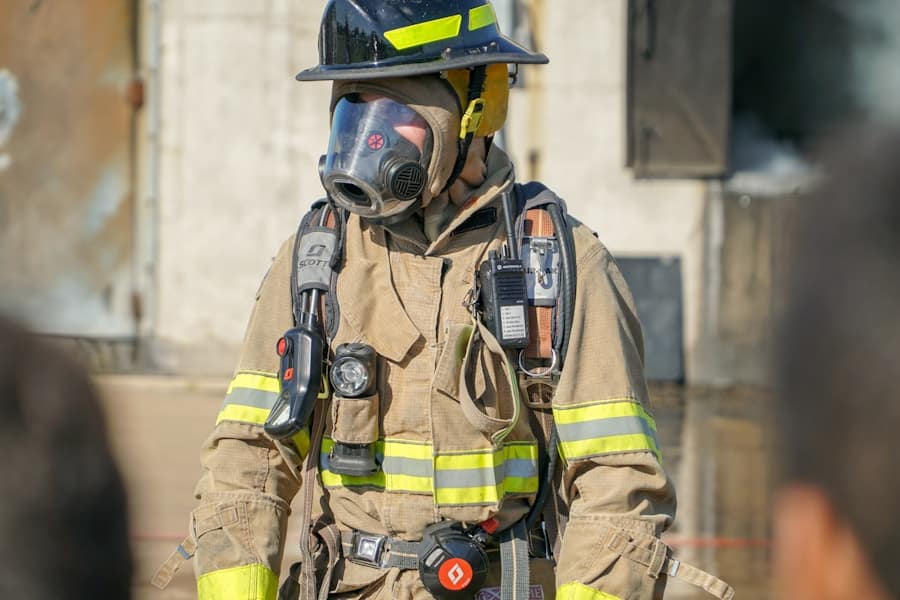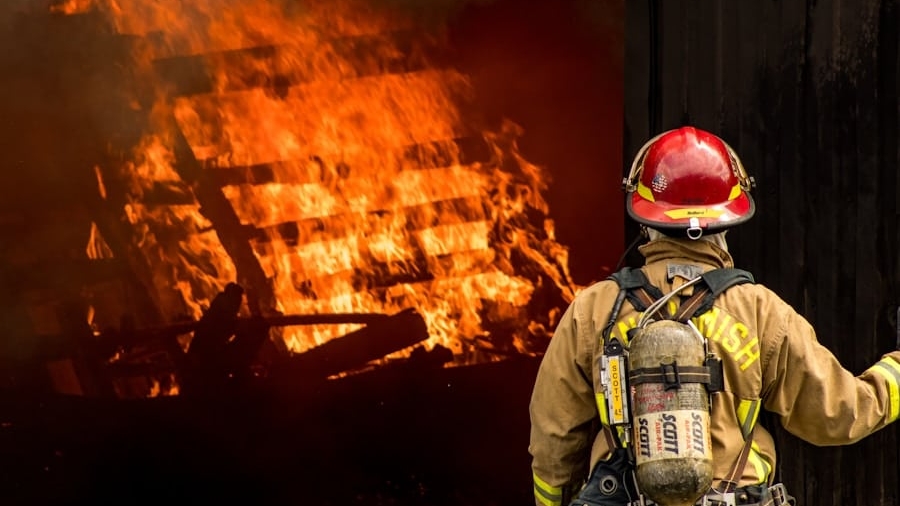Augmented Reality (AR) technology has emerged as a transformative force across various sectors, and firefighting is no exception. By overlaying digital information onto the physical world, AR provides firefighters with enhanced situational awareness, critical data, and real-time insights that can significantly improve their operational effectiveness. The integration of AR into firefighting practices is not merely a technological upgrade; it represents a paradigm shift in how firefighters approach their duties, particularly in hazardous environments.
As the nature of firefighting evolves with increasing complexity in urban landscapes and the growing prevalence of wildfires, the need for innovative solutions becomes paramount. The application of AR technology in firefighting encompasses a range of functionalities, from visualizing building layouts to identifying potential hazards in real-time. Firefighters equipped with AR devices can access vital information such as structural integrity assessments, chemical hazard data, and even live feeds from drones or cameras deployed in the field.
This capability not only enhances decision-making but also fosters a safer working environment for firefighters who often operate under extreme pressure and uncertainty. As we delve deeper into the significance of hazard recognition and the role of AR technology in this context, it becomes evident that the future of firefighting may very well hinge on these advancements.
Key Takeaways
- AR technology is revolutionizing the way firefighters approach hazard recognition and response.
- Hazard recognition is crucial in firefighting as it allows for proactive measures to be taken to prevent accidents and injuries.
- AR technology enhances hazard recognition by providing real-time information and visualization of potential hazards in the environment.
- Case studies have shown the successful implementation of AR technology in firefighting, leading to improved situational awareness and safety for firefighters.
- Training and implementation of AR technology for firefighters is essential for maximizing its potential and ensuring its effective use in the field.
The Importance of Hazard Recognition in Firefighting
The Complexity of Modern Fires
In many cases, the difference between a successful operation and a tragic outcome hinges on a firefighter’s ability to recognize and respond to potential threats. Moreover, the complexity of modern fires—exacerbated by factors such as building materials, fire behavior, and environmental conditions—demands a heightened level of awareness and expertise. For instance, synthetic materials commonly found in contemporary construction can produce toxic smoke and gases when burned, complicating rescue efforts and necessitating immediate hazard assessment.
The Need for Enhanced Hazard Recognition
Firefighters must be trained not only to recognize these hazards but also to understand their implications for both their safety and the safety of civilians. This underscores the critical need for tools and technologies that can enhance hazard recognition capabilities, allowing firefighters to make informed decisions in high-stakes situations.
Enhancing Firefighter Safety and Effectiveness
How AR Technology Enhances Hazard Recognition

AR technology enhances hazard recognition by providing firefighters with real-time data overlays that can be accessed through smart glasses or mobile devices. These overlays can include critical information such as building schematics, locations of hazardous materials, and even thermal imaging data that reveals hotspots within a structure. By visualizing this information directly within their field of view, firefighters can make quicker assessments about the environment they are entering, which is essential for both operational efficiency and personal safety.
For example, when responding to a fire in a multi-story building, AR can display the layout of the floors, indicating which areas have been cleared and which remain potentially dangerous. This capability allows firefighters to navigate more effectively while minimizing their exposure to hazards. Additionally, AR can integrate data from various sources, such as sensors that detect gas leaks or structural weaknesses, providing a comprehensive view of the situation at hand.
This integration not only aids in hazard recognition but also facilitates better communication among team members, ensuring that everyone is on the same page regarding potential risks. To learn more about how AR technology is used in firefighting, you can visit this link: Fire Engineering – Augmented Reality in the Fire Service
Case Studies of AR Technology in Action
Several fire departments around the world have begun to implement AR technology with promising results. One notable example is the Los Angeles Fire Department (LAFD), which has experimented with AR applications to enhance situational awareness during emergency responses. By utilizing AR headsets that project building layouts and hazard information directly into firefighters’ line of sight, LAFD has reported improved navigation and decision-making during complex incidents.
This technology has proven particularly beneficial in high-rise fires where traditional methods of gathering information can be time-consuming and fraught with risk. Another compelling case study comes from the United Kingdom, where the London Fire Brigade has integrated AR into its training programs. By simulating real-life scenarios using AR technology, trainees can experience various fire conditions and hazards without the associated risks of live training exercises.
This immersive training approach allows firefighters to practice hazard recognition in a controlled environment, honing their skills before facing actual emergencies. The feedback from participants has been overwhelmingly positive, with many noting that AR training has significantly improved their confidence and preparedness for real-world situations.
Training and Implementation of AR Technology for Firefighters
The successful implementation of AR technology in firefighting requires comprehensive training programs tailored to the unique challenges faced by firefighters. Training must encompass not only the technical aspects of using AR devices but also how to interpret the data presented effectively.
Moreover, ongoing training is essential as AR technology continues to evolve. Firefighters must stay abreast of new features and updates to ensure they are utilizing the technology to its fullest potential. Simulation exercises that incorporate AR can serve as valuable tools for reinforcing skills and fostering teamwork among firefighters.
By creating realistic scenarios that require quick hazard recognition and decision-making, departments can better prepare their personnel for the unpredictable nature of firefighting.
Challenges and Limitations of AR Technology in Hazard Recognition

Despite its potential benefits, the integration of AR technology into firefighting is not without challenges. One significant limitation is the reliance on technology in environments where connectivity may be compromised. Firefighters often operate in areas with limited or no access to cellular networks or Wi-Fi, which can hinder the functionality of AR devices that depend on real-time data streaming.
This issue necessitates the development of offline capabilities or local data storage solutions that can still provide essential information without requiring constant connectivity. Additionally, there are concerns regarding the durability and reliability of AR devices in extreme conditions. Firefighters face harsh environments characterized by heat, smoke, water, and debris; thus, any equipment used must be rugged enough to withstand these challenges.
Ensuring that AR devices are both functional and safe under such conditions is paramount for their successful adoption in firefighting operations. Furthermore, there may be resistance from some firefighters who are accustomed to traditional methods and may be hesitant to embrace new technologies.
Future Developments and Potential of AR in Firefighting
The future of AR technology in firefighting holds immense potential as advancements continue to emerge at a rapid pace. One area ripe for development is the integration of artificial intelligence (AI) with AR systems. By leveraging AI algorithms, AR applications could analyze data from various sources—such as weather conditions, fire behavior models, and historical incident reports—to provide predictive insights that enhance hazard recognition capabilities further.
This could enable firefighters to anticipate potential risks before they manifest, allowing for proactive measures rather than reactive responses. Moreover, as wearable technology becomes more sophisticated, we may see the emergence of lightweight AR helmets or visors that provide seamless access to critical information without obstructing vision or mobility. These innovations could revolutionize how firefighters interact with their environment during operations, making hazard recognition more intuitive and efficient.
Additionally, collaborative platforms that allow multiple teams to share real-time data through AR could enhance coordination during large-scale incidents or disasters.
The Impact of AR on Firefighter Safety and Effectiveness
The integration of augmented reality technology into firefighting represents a significant advancement in enhancing safety and operational effectiveness for first responders. By improving hazard recognition capabilities through real-time data visualization and immersive training experiences, AR empowers firefighters to make informed decisions in high-pressure situations. As fire departments continue to explore innovative applications of this technology, it is clear that augmented reality will play an increasingly vital role in shaping the future landscape of firefighting practices.
As we look ahead, it is essential for fire departments to embrace these technological advancements while addressing the challenges associated with their implementation. By investing in training programs and fostering a culture of innovation within firefighting teams, departments can ensure that they are well-equipped to leverage AR technology effectively. Ultimately, the impact of augmented reality on firefighter safety and effectiveness will not only enhance operational outcomes but also contribute to saving lives—both those of firefighters and civilians alike.

